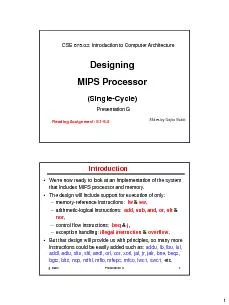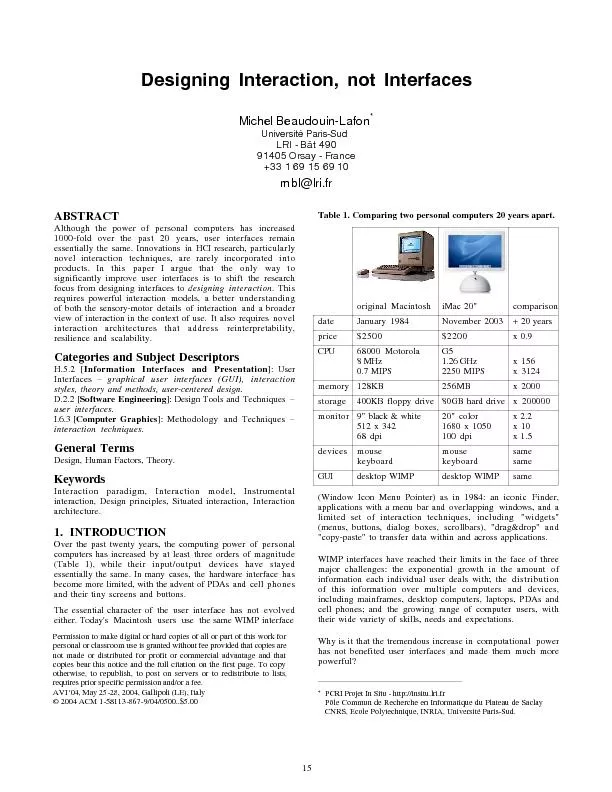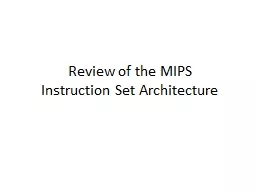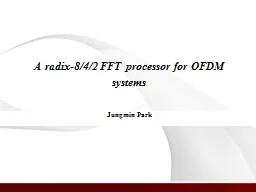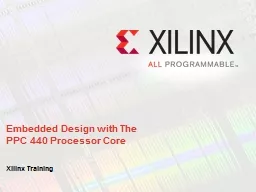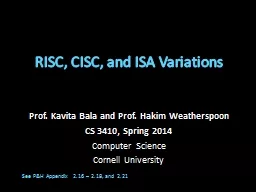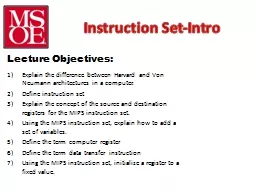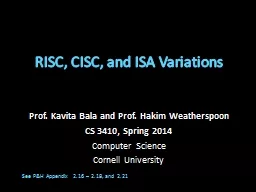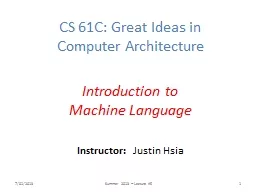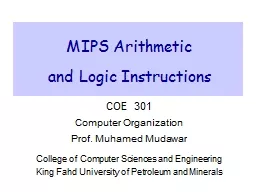PDF-MIPS Processor
Author : lucinda | Published Date : 2020-11-23
1 Designing Single Cycle Presentation G CSE 67502 Introduction to Computer Architecture Slides by Gojko Babi ć Reading Assignment 51 54 g babic Presentation
Presentation Embed Code
Download Presentation
Download Presentation The PPT/PDF document "MIPS Processor" is the property of its rightful owner. Permission is granted to download and print the materials on this website for personal, non-commercial use only, and to display it on your personal computer provided you do not modify the materials and that you retain all copyright notices contained in the materials. By downloading content from our website, you accept the terms of this agreement.
MIPS Processor: Transcript
Download Rules Of Document
"MIPS Processor"The content belongs to its owner. You may download and print it for personal use, without modification, and keep all copyright notices. By downloading, you agree to these terms.
Related Documents

